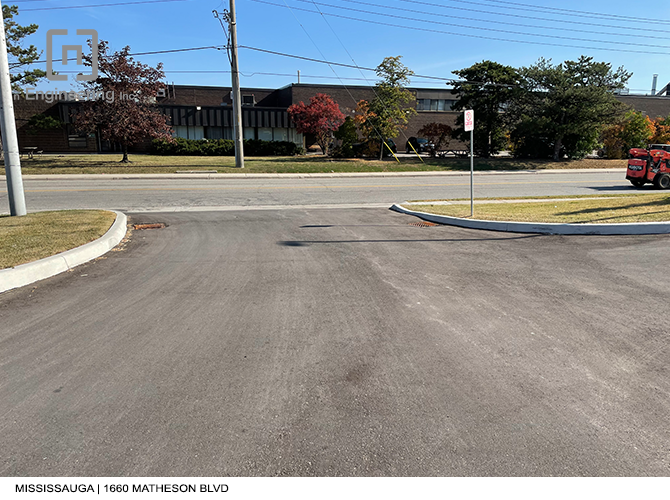In Canada, urban expansion and infrastructure development are accelerating, making transportation impact studies a critical component of the planning process. A Transportation Impact Study (TIS) evaluates the effects of proposed developments on the surrounding transportation network. At n Engineering, we specialize in conducting comprehensive TIS to ensure developments are well-integrated into the existing infrastructure while maintaining safety and efficiency.
What is a Transportation Impact Study?
A Transportation Impact Study in Canada is a thorough analysis performed during the planning and approval stages of new developments. It assesses how a proposed project will impact local traffic, public transit, pedestrian pathways, and cycling networks. The primary goal is to identify potential issues and recommend solutions to mitigate them.
Key objectives include:
- Determining traffic generation and distribution patterns.
- Assessing the capacity and performance of existing transportation networks.
- Evaluating safety concerns for all road users.
- Proposing measures to address identified challenges.
This proactive approach ensures that developments align with community goals and support sustainable growth.
The Importance of Transportation Impact Studies in Canada
Canada’s growing cities face increasing pressures on their transportation systems. A well-executed TIS helps balance development needs with infrastructure capacity. Here are some reasons why TIS is essential:
1. Promoting Sustainable Urban Growth
By evaluating potential traffic impacts, transportation consultants ensure that new projects align with long-term urban planning objectives. This prevents overburdening existing infrastructure and encourages the use of sustainable transportation options like public transit and active transportation.
2. Enhancing Safety for All Users
Safety is a top priority in transportation planning. A TIS identifies potential hazards and recommends design adjustments to reduce risks for drivers, pedestrians, and cyclists.
3. Informing Decision-Making
Municipalities rely on TIS reports to make informed decisions about zoning approvals, infrastructure investments, and development permits. A comprehensive study provides data-driven insights, enabling effective resource allocation.
The Role of Transportation Engineering Consultants
At n Engineering, our team of transportation engineering consultants brings expertise and innovation to every project. We collaborate with developers, municipalities, and stakeholders to deliver accurate and actionable insights. Our services include:
- Traffic volume analysis and forecasting.
- Intersection performance evaluation.
- Public transit integration strategies.
- Recommendations for roadway modifications and upgrades.
Why Choose n Engineering?
Our approach combines technical proficiency with a commitment to sustainability. By leveraging advanced modeling tools and local knowledge, we ensure our studies are precise and tailored to the unique needs of Canadian communities.
Transportation Impact Study Process
Conducting a TIS involves several key steps:
1. Scoping and Data Collection
The first step is to define the study’s scope in consultation with municipal authorities. This includes identifying:
- Study area boundaries.
- Key intersections and roadways to analyze.
- Data collection methods (e.g., traffic counts, speed surveys).
2. Traffic Analysis
Using collected data, transportation consultants evaluate current traffic conditions and forecast future scenarios based on the proposed development. Advanced simulation tools are used to model traffic flows and identify potential congestion points.
3. Impact Assessment
The study assesses how the development will affect traffic patterns, road capacity, and safety. This includes evaluating:
- Intersection delays and level of service (LOS).
- Impacts on public transit systems.
- Pedestrian and cyclist infrastructure adequacy.
4. Recommendations
Based on the analysis, the TIS proposes mitigation measures such as:
- Signal timing adjustments.
- Adding turning lanes or roundabouts.
- Enhancing pedestrian crossings and bike lanes.
- Promoting alternative transportation modes.
5. Reporting and Review
The findings are compiled into a detailed report, which is reviewed by municipal authorities and stakeholders. This ensures transparency and alignment with local planning requirements.
Transportation Consultants : Addressing Urban Challenges
As one of Canada’s fastest-growing cities, Toronto faces unique transportation challenges. Increased population density and rapid development demand robust planning to maintain mobility and quality of life.
At n Engineering, we provide specialized services as transportation consultants Toronto, addressing issues like:
- Congested intersections.
- Limited public transit accessibility.
- Pedestrian safety concerns in high-traffic areas.
Our expertise in the Greater Toronto Area (GTA) ensures that our solutions are practical and locally relevant.
The Future of Transportation Planning in Canada
Transportation impact studies are evolving to address emerging trends and technologies. Key areas of focus include:
1. Integration of Smart Transportation Systems
Innovations like real-time traffic monitoring and adaptive traffic signals enhance the accuracy and effectiveness of TIS. These technologies help optimize traffic flow and improve road safety.
2. Emphasis on Sustainable Transportation
Encouraging public transit use, cycling, and walking is becoming a cornerstone of urban planning. Future TIS will increasingly prioritize infrastructure that supports these modes.
3. Autonomous Vehicles and Their Impacts
The rise of autonomous vehicles presents new challenges and opportunities for transportation planning. Studies will need to consider their effects on traffic dynamics and infrastructure requirements.
How n Engineering Leads the Way
With a strong commitment to innovation and sustainability, n Engineering is at the forefront of transportation planning in Canada. Our expertise in conducting Transportation Impact Studies in Canada ensures that developments meet the needs of today while planning for the future.
Services We Offer:
- Comprehensive TIS for residential, commercial, and industrial developments.
- Public transit and active transportation integration.
- Tailored solutions for municipalities and private developers.
By choosing n Engineering, you gain a trusted partner dedicated to creating efficient, safe, and sustainable transportation systems.
Conclusion
A Transportation Impact Study in Canada is more than just a regulatory requirement—it’s a tool for building better communities. At n Engineering, we combine technical expertise with a deep understanding of Canadian urban dynamics to deliver impactful results. Whether you’re a developer planning a new project or a municipality aiming to enhance your infrastructure, our team is here to help.
Partner with us to navigate the complexities of transportation planning and create a future where mobility works for everyone. Contact n Engineering today to learn more about our services and how we can assist with your next project.

